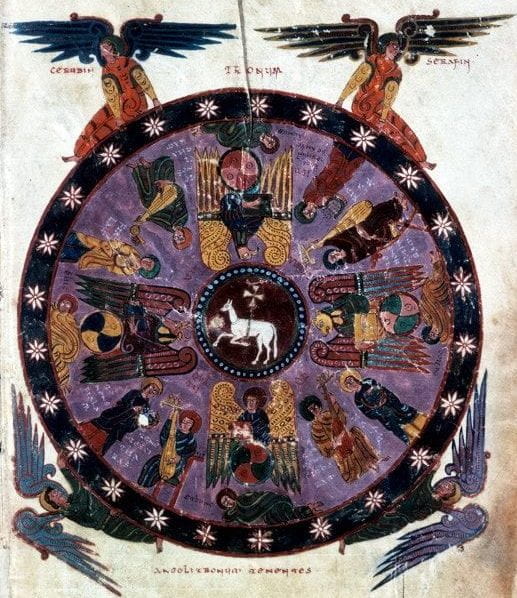 Jack West is a graduating honors history and biology student pursuing an MD/MPH. Jack has been involved on and off campus, occupying his time as the ASG director of physical health, an emergency room tech and a Yale research fellow. After college, he is moving to New York City to study for the MCAT and find a job that pays the rent. This spring, West took the honors college retro readings seminar on the Bible with Honors Dean Lynda Coon and studied the different representations of Heaven.
Jack West is a graduating honors history and biology student pursuing an MD/MPH. Jack has been involved on and off campus, occupying his time as the ASG director of physical health, an emergency room tech and a Yale research fellow. After college, he is moving to New York City to study for the MCAT and find a job that pays the rent. This spring, West took the honors college retro readings seminar on the Bible with Honors Dean Lynda Coon and studied the different representations of Heaven.
The biblical temple remains a central theme throughout the bible. From a portable vessel in the desert of Exodus 26, to the eschatological temple in Ezekiel 40-42, to the metaphysical “temple” as an apocalyptic backdrop in John’s Revelation. Conflict between the terrestrial and the Heavenly exists in many chapters of the Bible and especially applies to the temple concept. Throughout the Tanakh and the New Testament we are presented with both the promise and goal of being in God’s Heavenly temple, only being allowed the earthly location as a temporary substitute. On twelve separate occasions does the Book of Psalms mention a “temple.” In Psalms, the Temple is employed as a physical place where God sits. “The Lord is in his holy temple, the Lord’s throne is in heaven,” while he looks “down from the height of his sanctuary” (Psalms 11:4 and 102). Moses and the Israelites allude to this temple, or sanctuary, in Exodus 15:17 when they sing “The place, Lord, you made for your dwelling, the sanctuary, Lord, your hands established,” referencing a mountain.
In fact, the temple concept reaches farther than the literal translations. The diversity of terms of God’s dwelling place in the bible like “house,” “sanctuary,” and “mountain” could all be interpreted as physical manifestations on Earth of God’s presence unconfined to a literal temple structure. Perhaps this boundless representation is best seen at the end of Revelation, when John is given a view of the Holy City, the New Jerusalem, and does not see a temple for “the Lord God Almighty and the Lamb are its temple (Revelation 21:22). For the first time the reader must visualize a Holy City without a Holy Temple, an inextricable idea throughout most of the Bible in Ezekiel, Isaiah, etc. In this sense, John describes eternal intimacy with God in the form of light, a classic representation of divine presence. This description implies it is not important to consider where God lives, whether it be a temple or elsewhere. Though God is central to the divine nature of an earthly temple, God is not confined to it, neither on Earth nor in heaven.
